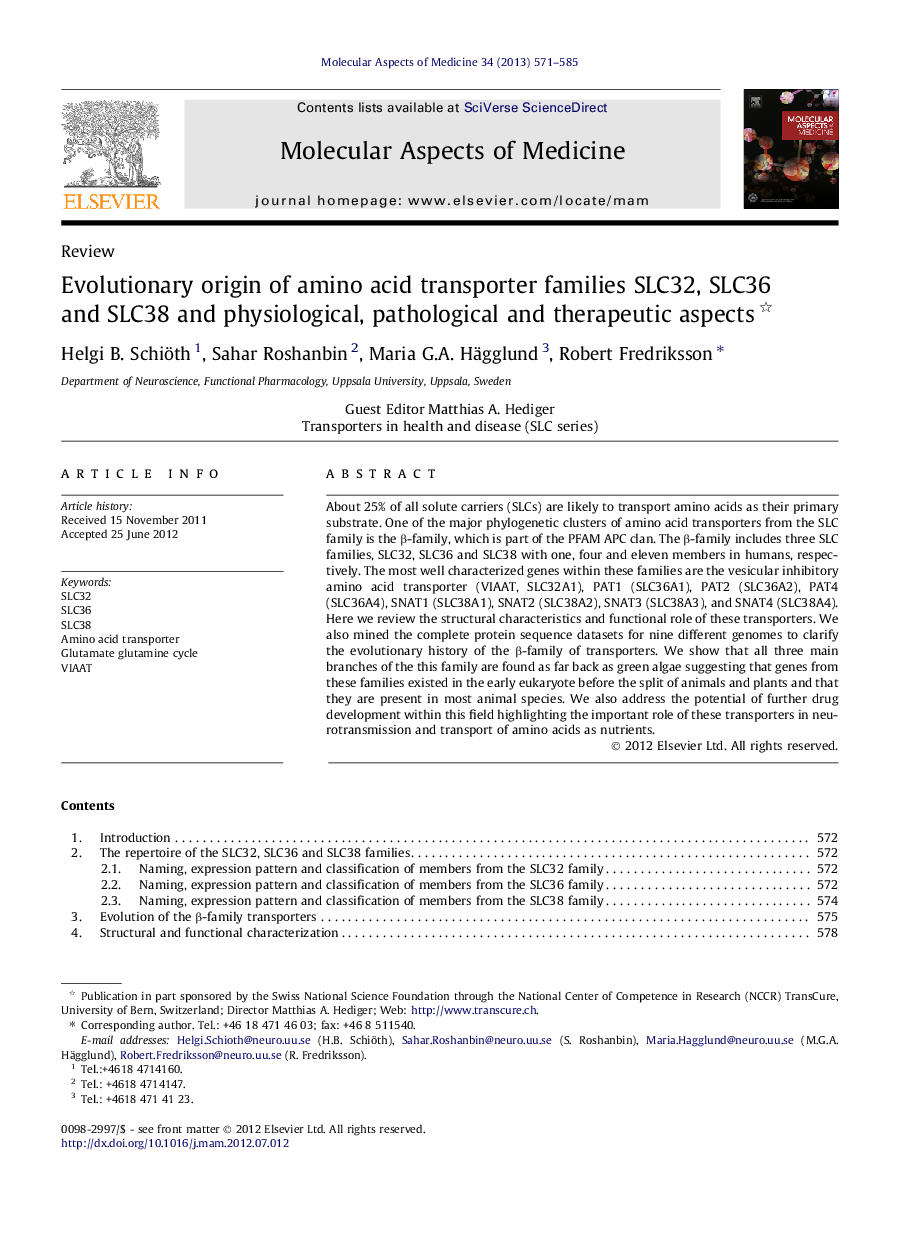| Article ID | Journal | Published Year | Pages | File Type |
|---|---|---|---|---|
| 8341570 | Molecular Aspects of Medicine | 2013 | 15 Pages |
Abstract
About 25% of all solute carriers (SLCs) are likely to transport amino acids as their primary substrate. One of the major phylogenetic clusters of amino acid transporters from the SLC family is the β-family, which is part of the PFAM APC clan. The β-family includes three SLC families, SLC32, SLC36 and SLC38 with one, four and eleven members in humans, respectively. The most well characterized genes within these families are the vesicular inhibitory amino acid transporter (VIAAT, SLC32A1), PAT1 (SLC36A1), PAT2 (SLC36A2), PAT4 (SLC36A4), SNAT1 (SLC38A1), SNAT2 (SLC38A2), SNAT3 (SLC38A3), and SNAT4 (SLC38A4). Here we review the structural characteristics and functional role of these transporters. We also mined the complete protein sequence datasets for nine different genomes to clarify the evolutionary history of the β-family of transporters. We show that all three main branches of the this family are found as far back as green algae suggesting that genes from these families existed in the early eukaryote before the split of animals and plants and that they are present in most animal species. We also address the potential of further drug development within this field highlighting the important role of these transporters in neurotransmission and transport of amino acids as nutrients.
Keywords
Related Topics
Life Sciences
Biochemistry, Genetics and Molecular Biology
Biochemistry
Authors
Helgi B. Schiöth, Sahar Roshanbin, Maria G.A. Hägglund, Robert Fredriksson,
